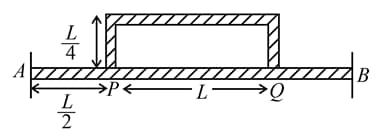Embibe Experts Solutions for Chapter: Heat Transfer, Exercise 3: Exercise-3
Embibe Experts Physics Solutions for Exercise - Embibe Experts Solutions for Chapter: Heat Transfer, Exercise 3: Exercise-3
Attempt the practice questions on Chapter 16: Heat Transfer, Exercise 3: Exercise-3 with hints and solutions to strengthen your understanding. Alpha Question Bank for Medical: Physics solutions are prepared by Experienced Embibe Experts.
Questions from Embibe Experts Solutions for Chapter: Heat Transfer, Exercise 3: Exercise-3 with Hints & Solutions
The two ends of a metal rod are maintained at temperatures and The rate of heat flow in the rod is found to be If the ends are maintained at temperatures and the rate of heat flow will be:
A body cools from a temperature to in . The room temperature is . Assume that Newton's law of cooling is applicable. The temperature of the body at the end of the next will be
Two rods and of different materials are welded together as shown in the figure. Their thermal conductivities are and . The thermal conductivity of the composite rod will be

of heat flowing through a rod of iron per second. When the rod is cut down to pieces then what will be the heat flowing through each piece per second having the same differential temperature (temperature gradient)?
Black holes in orbit around a normal star are detected from the earth due to the frictional heating of infalling gas into the black hole, which can reach temperatures greater than . Assuming that the infalling gas can be modelled as a blackbody radiator then the wavelength of maximum power lies
Two conductors having the same width and length, thickness and thermal conductivity and are placed one above the other. Find the equivalent thermal conductivity.
A long metallic bar is carrying heat from one of its ends to the other end under steady-state. The variation of temperature along the length of the bar from its hot end is best described by which of the following figures?
The temperature difference of is maintained between two ends of a uniform rod of length . Another bent rod , of the same cross-section as and length , is connected across (see figure). In steady-state, the temperature difference between and will be close to

